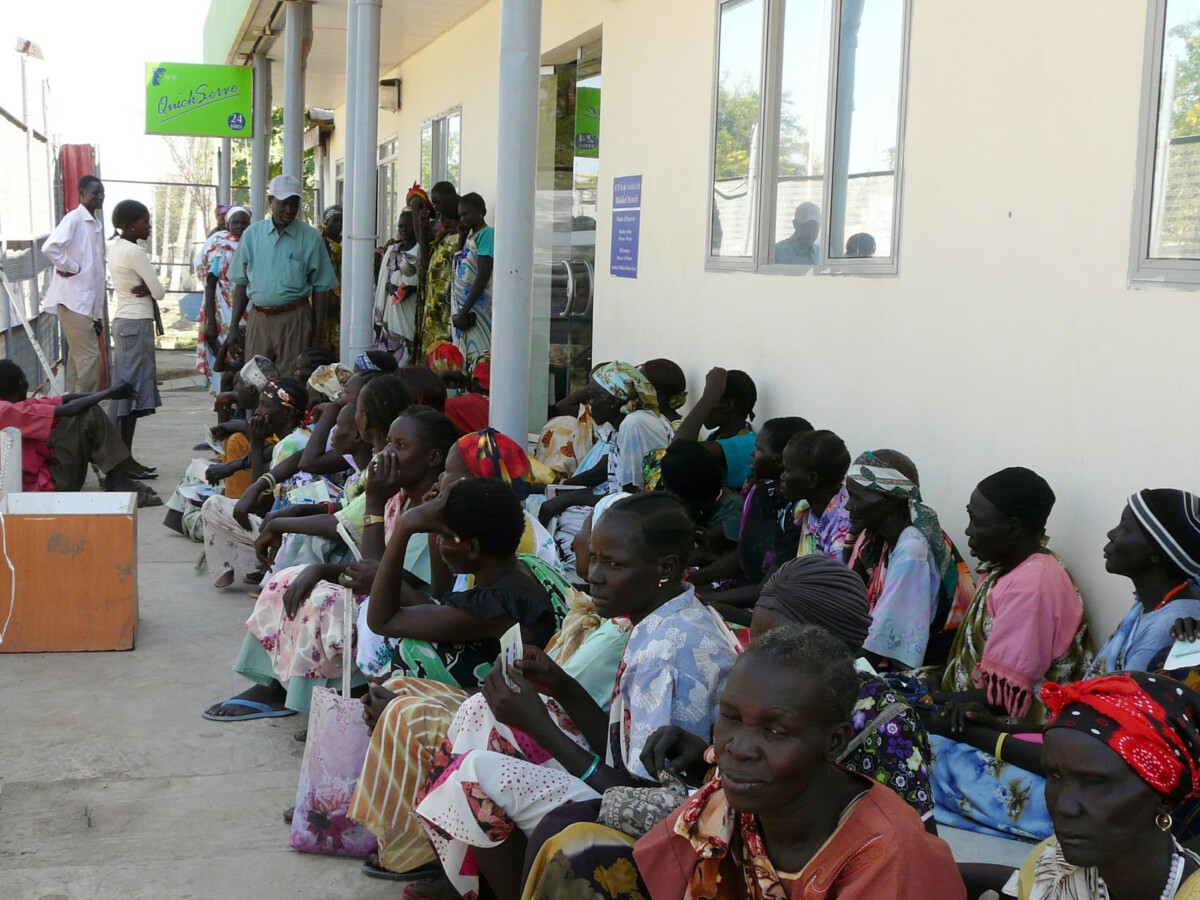AI-Powered Learning Transforms Traditional Classrooms

Education in 2025 feels like stepping into a science fiction movie that finally became reality. The October 2024 release of the federal government’s toolkit for AI integration, “Empowering Education Leaders,” serves as a bellwether for the state of AI in K–12: a lot of talk but little action. But while administrators are still figuring things out, something remarkable is happening in classrooms across America. Imagine a classroom where AI adapts in real time to student needs, providing personalized lessons and feedback. Teachers are using custom GPTs to design learning experiences tailored to each student’s unique needs and interests. “Custom GPTs are about educators designing learning experiences, because that’s what teaching is about, designing experiences that are going to enable students to learn,” says Guhlin. This isn’t just fancy technology for tech’s sake – it’s actually working, and students are more engaged than ever before.
Mental Health Crisis Sparks Educational Revolution

Nearly 60% of teens report experiencing some form of mental health challenge, such as anxiety or depression. This staggering statistic has forced schools to completely rethink their approach to student wellbeing. Many institutions in 2025 have adopted mental health curriculums that help students identify and manage emotions from an early age. Initiatives like mindfulness programs, counseling hotlines, and emotional regulation techniques taught in classrooms have become more common. What’s fascinating is how this crisis has become a catalyst for innovation. A sure bet for 2025 is that the use of artificial intelligence (AI) will continue to grow throughout virtually all areas of society, including education and mental health. As AI becomes more ubiquitous, we must continually work to understand its evolving implications for young people and how to support them effectively. Schools are now using AI-powered tools to identify students at risk and provide early intervention support.
Micro-Credentials Revolutionize Professional Development

Forget sitting through endless professional development sessions that feel disconnected from your actual work. NEA offers over 175 micro-credentials that have been created by educators for educators. These bite-sized learning experiences are transforming how teachers grow professionally. Micro-credentials allow educators to participate in professional learning that is personalized, directly connected to their work, and competency-based. When earning a micro-credential, an educator demonstrates a competency by gathering evidence of work with students or colleagues. Think of it like earning badges in a video game, except these badges actually represent real skills that improve student outcomes. They are a fast, flexible, cost-effective way to update learners’ skills in designated areas. An alternative approach to career and professional development has emerged with micro-credentials. Teachers can now build their expertise on their own schedule, focusing on the specific skills their students need most.
Data-Driven Personalized Learning Takes Center Stage

Personalized learning paths are instructional approaches that adapt to individual students’ preferences, abilities, and learning paces. Unlike the traditional education model, personalized learning considers the unique needs of each student. Schools are finally moving beyond the one-size-fits-all approach that left too many kids behind. The growing use of technology in schools is producing massive amounts of data on students’ activities in the classroom and online. “We’re now able to capture moment-to-moment data, every keystroke a kid makes,” said Schwartz – data that can reveal areas of struggle and different learning opportunities. This granular data is being used to create learning experiences that actually match how each student learns best. Additionally, the insights generated by AI also empower educators to set realistic and personalized goals for their students. For instance, if a student is progressing rapidly in reading comprehension but requires additional support in vocabulary building, the teacher can use AI-generated data to design specific, measurable objectives.
Higher Education Faces Financial and Trust Crisis

Something shocking is happening to higher education’s reputation in America. Trust in higher education continues to decline, as evidenced by the latest Gallup data. Concerns about the value of a degree, politicization, rising tuition costs, and perceived misalignment with workforce needs are contributing to the erosion of public confidence in US higher education. It’s not just about money anymore – though that’s certainly part of it. A 2024 survey conducted by Gallup showed that only 43% of Americans are satisfied with the quality of K-12 education. Furthermore, a growing proportion of U.S. adults expressed they have little or no confidence in higher education. Universities are scrambling to prove their worth by creating more practical, career-focused programs. Johnson & Wales University, “Three-year career-focused bachelor’s degree,” accessed March 26, 2025. Utah System of Higher Education, “Utah Board of Higher Education advances innovative three-year bachelor’s degree, first public system in nation,” March 25, 2024. Three-year degree programs are popping up everywhere as institutions try to reduce costs and get students into the workforce faster.
School Choice Movement Gains Unprecedented Momentum

The landscape of where American children go to school is changing faster than anyone expected. For the first time, two states have more than 10% of their K–12 student population participating in a private school choice program. Florida leads the way with nearly 13% of students enrolled in a private school choice program. Arizona follows close behind, with 10% of their students participating in a private school choice program. What’s driving this dramatic shift? Parents are voting with their feet, seeking educational options that better match their children’s needs. The share of Arizona students attending traditional public school fell from 89% in 2001–2002 to 68% in 2024–2025. This isn’t just about wealthy families anymore – school choice programs are opening doors for families across all income levels. 2024 Choose to Learn report illustrates just how crucial this is: Researchers found that 48% of K-12 parents want to explore different educational options for their children, but lack the knowledge of what’s available.
Teacher Retention Crisis Forces Innovation

The teacher shortage isn’t just about not having enough warm bodies in classrooms – it’s about keeping the good ones from burning out and leaving. For years before the pandemic, teachers in specialized roles — like foreign language instruction, advanced math, or special education — were already struggling. Especially in rural America, many schools are still experiencing shortages of these educators. Schools are getting creative with solutions that would have seemed impossible just a few years ago. The answer lies in meeting educators where they are, and providing them with the support they need to feel empowered and appreciated. For many, this includes: Ensuring that compensation reflects the value educators are creating. Empowering teacher aides can be a key to making the education landscape accessible and supportive for everyone. While aides are supported to pursue their fullest potential as educators, students — who were becoming casualties of under-resourced schools — are lifted along the way. Districts are investing in teacher aides and paraprofessionals like never before, creating career pathways that keep experienced educators in the system.
Technology Infrastructure Creates New Digital Divides

While AI and personalized learning sound amazing, there’s a harsh reality many districts are grappling with. A major factor prohibiting schools from acquiring generative AI tools is the cost. K–12 education often doesn’t have the funding to invest in these products and solutions. The digital divide isn’t just about having computers anymore – it’s about having the right kind of technology infrastructure to support AI-powered learning tools. Not all schools or students have access to the devices, internet connectivity, or technical infrastructure necessary to leverage AI systems effectively. Some districts are finding creative solutions through partnerships with tech companies and federal funding programs. Fresno Unified School District rolled out Promethean interactive panels so students and teachers in every classroom get have equal access to learning. A San Francisco Bay Area school district solves the problem of the ed tech haves and have-nots. The schools that figure out how to bridge this gap are seeing remarkable results, while others struggle to keep up with basic technology needs.
Assessment and Grading Systems Undergo Major Transformation

The traditional letter grade system is under attack from all sides, and 2025 might be the year it finally breaks. An important education trend for 2025 will be challenging some of the specific conventional wisdom that’s been ingrained in us as educators. As more research surfaces questioning the efficacy of some beloved practices, educators will need to be willing to think critically and change tack. Students are demonstrating their learning through portfolios, performance assessments, and real-world projects instead of standardized tests. Thus, in many MOOC (massive open online courses) and online education certificate programmes, information technology students and learners can develop a solution to a real-world problem using real-world data and can make a design or write a programme for the problem. For example, training was provided by integrating real-world problems and projects in the Experiential Network (XN) project at Northeastern University. In this project, approximately 10,000 students actively worked and completed 2,000 projects for companies such as Pfizer, General Electric, Raytheon and Costco. This shift toward competency-based assessment is giving students more authentic ways to show what they know and can do.
Community Partnerships Reshape School Resources

Schools in 2025 aren’t going it alone anymore – they’re building partnerships that would have seemed impossible just a decade ago. These partnerships can drive home a crucial point: Education isn’t just the responsibility of teachers. It’s a collaborative effort of communities, parents, teachers, and students working together. Local businesses are offering real-world learning experiences, mental health organizations are providing on-site counselors, and community colleges are creating dual enrollment programs that let high schoolers earn college credit. Last year, New Jersey’s secretary of higher education said the state successfully reengaged 8,600 students who previously stopped out by offering personalized coaching and financial support, including for application fees and unexpected expenses. The state will award an additional $1.6 million to 18 public colleges in fiscal 2025 to continue the effort. These partnerships are filling gaps that schools simply can’t address on their own, from providing mental health support to offering career training programs. The most successful schools are those that have figured out how to leverage their entire community as an educational resource.
Federal Policy Changes Create Uncertainty and Opportunity

The political landscape is creating both challenges and opportunities for American education. With Republicans set to hold the presidency, Senate and House, they have indicated they plan to enact Trump’s policy priorities through a process called reconciliation. But lawmakers may seek to offset the costs of their agenda through elements of the College Cost Reduction Act, a GOP-led higher education package proposed last year. Project 2025 originated from The Heritage Foundation, one of 11 think tanks the American Association of University Professors found to be behind the wave of anti-DEI legislation sweeping through statehouses. Project 2025 also calls for prohibiting accreditors from mandating colleges to adopt DEI policies. While federal funding for education faces potential cuts, some states are stepping up with innovative programs and increased investment. Making the future even hazier, experts say they are uncertain how federal support for AI in K-12 will fare during President Donald Trump’s second term. Schools are learning to be more resourceful and less dependent on federal support, which may actually lead to more innovative local solutions.
These eight trends aren’t just reshaping individual classrooms – they’re fundamentally changing what American education looks like. From AI tutors to community partnerships, from mental health support to new forms of assessment, schools in 2025 are adapting faster than ever before. What’s your take on these changes? Did you expect education to transform this quickly?






